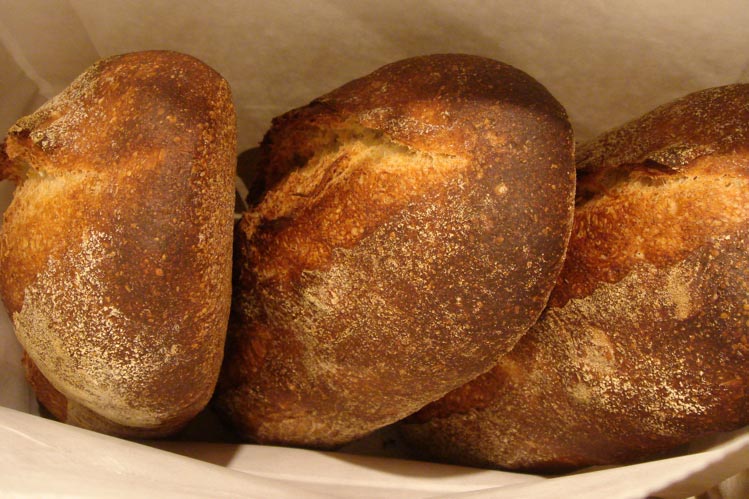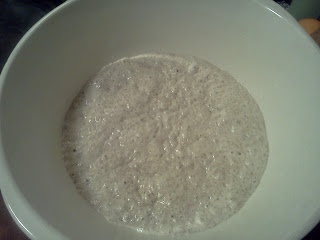
I decided to make my own sourdough starter and I'm trying 2 different methods, one with whole wheat and one with white flour. I want to see what the difference is.
When I've tried this in the past, I've wound up with moldy puddles of goo or I didn't understand what was going on & I gave up on it.
Whole wheat is a bit harder to start, so I began my mix with orange juice, which gives some sugar and some acid, both make yeasts very happy.
Why sourdough? Sourdough is
tasty. I love the bread. Also, it's the way that risen (leavened) bread has been made for hundreds or thousands of years, maybe. I want to be able to figure it out and make it.
What is sourdough? Sourdough is alive! Firstly, this is just the
starter, which is important. A sourdough starter is a bunch of wild yeast that has been gathered together, given food (flour) and water and let thrive. Once they're happily thriving, all you have to do is keep giving them food and the colony will live forever. There are sourdoughs that are hundreds of years old and their flavor gets more & more complex. Mine is a first generation - I am not sure how tasty it will be.
To make sourdough starter:Get a container - glass or ceramic is best.
Into this container, add:
- 1/2 cup water
- 1 cup flour
That's it! Mix them together and let it sit out with a paper towel over the top. The next day, dump out half of the mix and add in more flour and water. Keep the proportions the same.
It will take several days for the colony to get strong enough to really be noticeable, but keep it up. If it's not getting moldy, it's working.
Contrary to popular belief, sourdough yeast are not captured from the air, but from the wheat itself and possibly from our hands. All of these little microorganisms live together with the wheat. Given the right situation, they thrive and can help us make tasty bread. I am going to let these sourdough yeasts develop a colony for the next month or so, feeding them every day, and then try to make my first sourdough bread from my own starter.
Some common problems:Q. There is liquid on top & it looks dead.
A. It's not dead - mix in the liquid (it's
hooch, but don't drink it!), dump out half and add more flour and water to the mix.
Q. Nothing is happening.
A. It may be quiet for several days before you start noticing bubbles forming within the starter. Once bubbles are forming, you know the yeast are there and getting stronger.
Q. I can't see any bubbles!
A. Your starter may be really thin - if you have a liquidy starter, the gasses will just bubble away!
Q. It's been a few weeks and I am sick of feeding this thing every day.
A. It should be in good shape by now. Put it into the fridge until you are ready to use it. When you want to make sourdough bread, take it out, feed it and give it a day or so.






